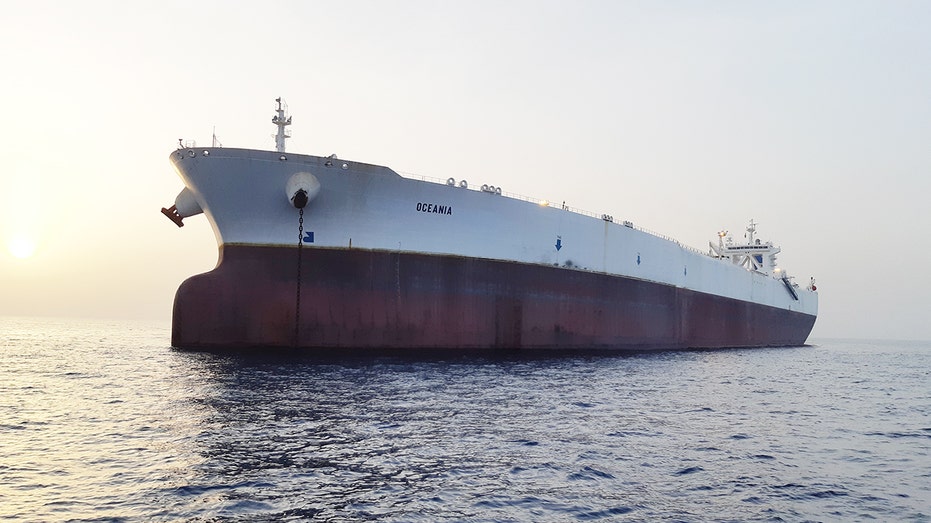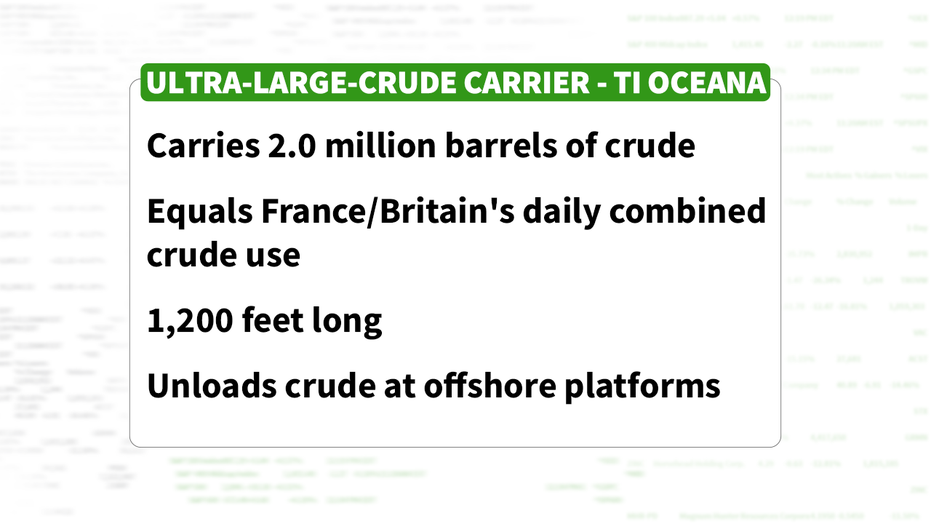Monster crude tankers seek world domination
Bigger is better these days -- at least when it comes to oil tankers crisscrossing the globe.
Once thought of as just a mode of transportation for fuel, they are now being used for more than just storage, representing ways to offset the disruption of supply and fill voids of product where it is needed.
In fact, the influence of crude oil carriers has become more influential than the price of oil as tankers keep getting bigger and bigger. The more oil one tanker can hold, the more influence it can wield on the market.

First, oil tankers were called crude carriers. Then there are supertankers, or what's referred to as very large crude carriers or (VLCC). They have become the largest man-made mobile structures on the earth. These carriers have the capability of carrying almost 2 million barrels of oil and product; they're so large, they often cannot enter port fully loaded and have to use offshore platforms to unload their treasures.
Now the world of oil carriers is growing even bigger.
There is a new first in class called, “ultra-large crude carrier”, the TI Oceania, which was stationed in Malta earlier this year. This monster has been used as floating storage for very low sulfur fuel.

The world’s first "ultra-large” crude carrier tanker may protect Asia from diesel shortages this winter as new a rule known as IMO 2020, which requires all merchant ships to use ultra-low sulfur diesel fuel for environmental reasons, raised fear of tighter supplies. The Oceania, which according to reports is more than 1,200 feet long and carries enough fuel to meet an entire day of France’s and Britain’s combined oil consumption, can help keep a market balanced.
Traders are speculating that the ship is headed to Sungai Linggi in Malaysia and will arrive in September to provide a supply of ultra-low sulfur diesel along with other tankers to offset fears of a supply shortage.
Crude oil carriers are also playing big into the U.S. energy revolution.
Now, the world is looking at the U.S. to become a major oil exporter. However, there are steps being taken so VLCC can handle our new bounty of crude oil.
New oil pipelines are sending shale oil to the Port of Corpus Christi, which will then will be shipped to all corners of the world. The port is expanding in anticipation and getting ready to send U.S. crude in what is expected to be bigger tankers to feed an oil-hungry world. Dredging and widening of the ship channel is making what will be the deepest port channel in the entire U.S. gulf region, ready to handle the ever-larger crude carriers. The Port of Corpus Christi will soon be able to handle exports of 5 million barrels a crude oil or product a day.
CLICK HERE TO READ MORE ON FOX BUSINESS
At that rate we may need even bigger tankers in the future to keep up with a world with growing oil demand.
Phil Flynn is senior energy analyst at The PRICE Futures Group and a Fox Business Network contributor. He is one of the world's leading market analysts, providing individual investors, professional traders, and institutions with up-to-the-minute investment and risk management insight into global petroleum, gasoline, and energy markets. His precise and timely forecasts have come to be in great demand by industry and media worldwide and his impressive career goes back almost three decades, gaining attention with his market calls and energetic personality as writer of The Energy Report. You can contact Phil by phone at (888) 264-5665 or by email at pflynn@pricegroup.com.




















